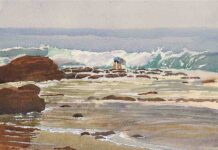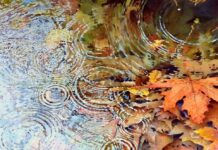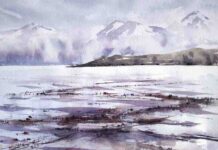
To the Shakers, light was everything, fuel for body, mind, and spirit. They designed their environment to let light in, as can be seen in the 20 buildings on the campus of Hancock Shaker Village. Artist Barbara Ernst Prey spent many days during the fall and winter of 2018–2019 immersed in these buildings and in the material culture and landscape of the Village. Through careful observation, she sketched boxes, garments, tools, and domestic objects as angular refractions of light migrated slowly across interior and exterior scenes. Unique palettes of color emerged — violet and emerald awash in the Laundry and Machine Shop, indigo and gold in the Round Stone Barn, slate and amber in the Sisters’ Dairy & Weave Shop.
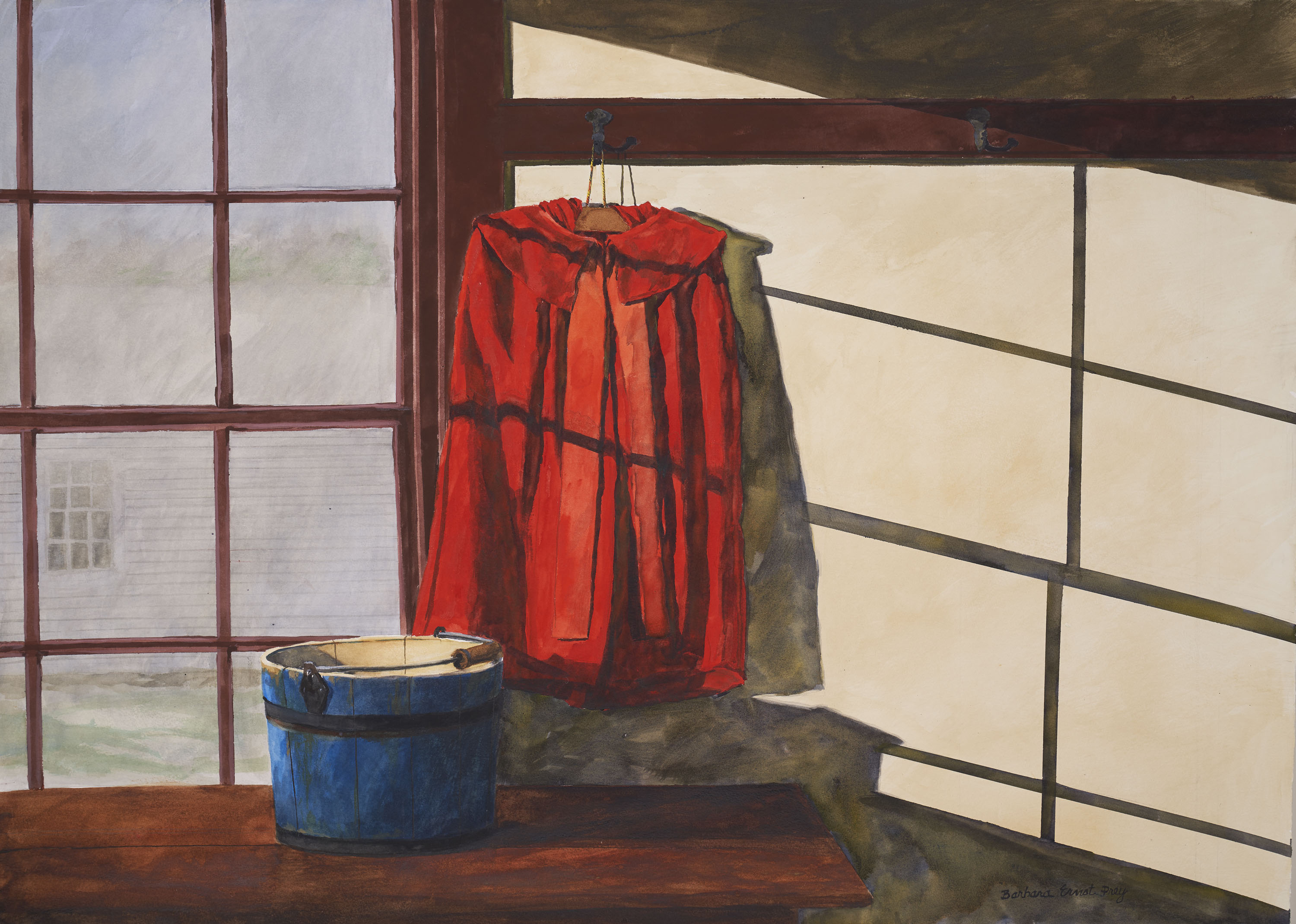
The works in “Borrowed Light,” on view at Hancock Shaker Village through November 11, 2019, are unexpectedly big and bold, a deliberate approach by the artist to explore how we can connect to the universe in an expansive and meaningful way. The term “borrowed light” was adopted by the Shakers to describe their architectural technique of incorporating windows and skylights into interior walls. The exhibition provides insight into the visual and haptic experience of sacred design, featuring objects and spaces enlivened by luminosity. Such light is expressed in intimate paintings such as “Channeled Light,” in which a wash basin and bucket are bathed in geometric-patterned light cast from a window.
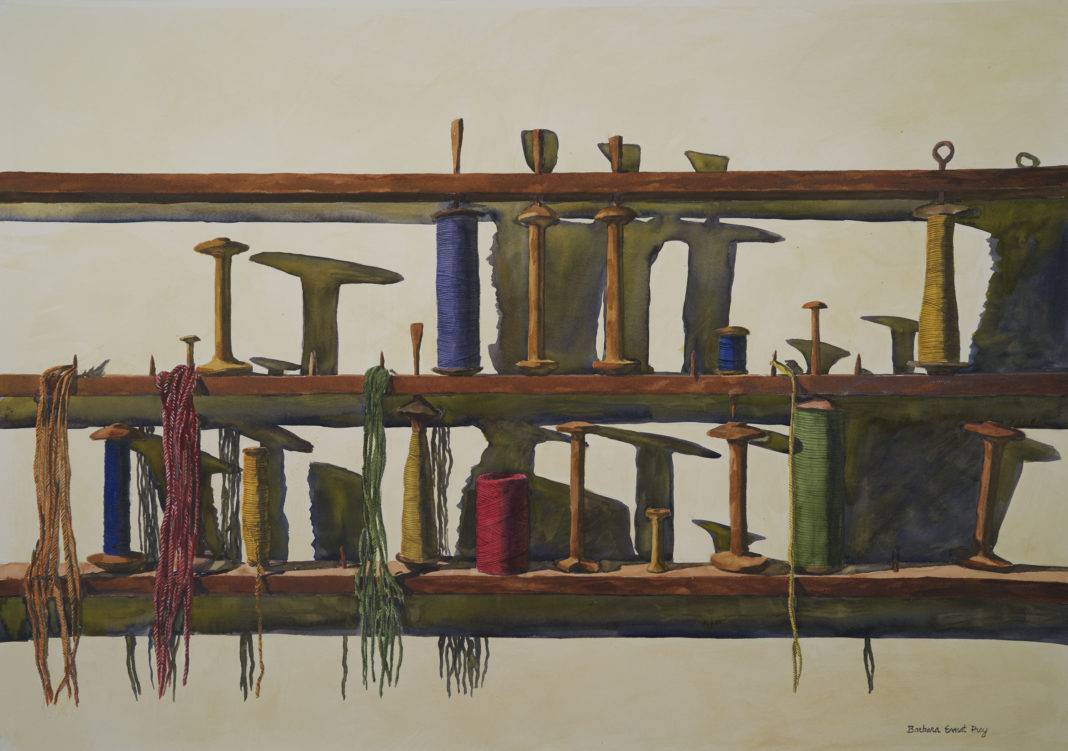
Similarly intimate is “Threads, Spindles,” with its rows of colorful spools of thread resting on simple wooden shelves, casting long shadows on the white wall behind them. “My paintings are based on abstract shapes, so there are multiple narratives within the painting,” Prey said. “If you think about it, that space is a microcosm of Shaker life. They raised the crops and animals to make the fiber, grew the plants to make the dyes, spun the thread, wove the textile, sewed the jacket, and later washed the jacket, all using tools that were handmade, down to the smallest hand-carved spool of thread,” she explained. Intrigued by the Shakers’ concept of equality between men and women, Prey also has a particular interest in women’s work, the subject of both “Channeled Light” and “Threads, Spindles.” The simplicity of Shaker design, pared down to its essentials, is a recurring theme in the exhibition.
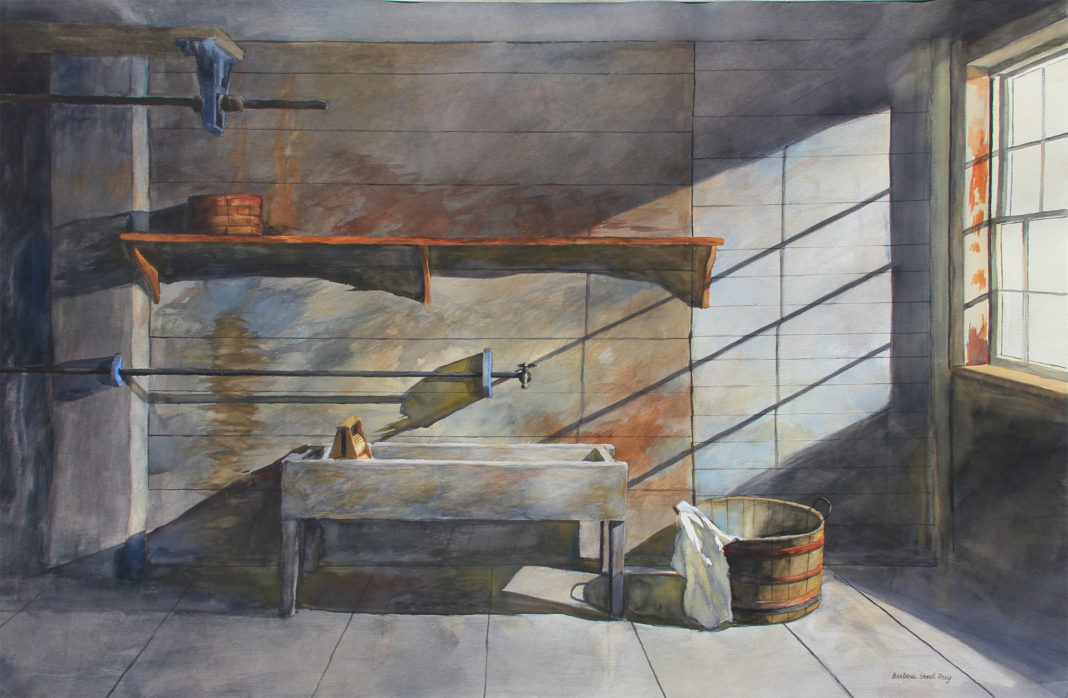
“I’ve always been drawn to the simplicity of Shaker design,” said Prey. “I’m also drawn to the handmade, which is something I equate with the Shakers.” It was during her undergraduate years at Williams College in the 1970s that she was introduced to the Shakers. She felt an immediate connection to their use of color in art, furniture, and everyday objects — a connection that became even stronger as she worked toward the master of divinity degree she earned at Harvard Divinity School in 1986. Her studies led her to examine existential questions — “who we are, where we’re going, why we’re here, and what’s important, what really matters,” said Prey. “I think this is reflected in much of my work. “Borrowed Light” is influenced by Shaker design, spirit, and sense of community, and we’re all connected through community.”
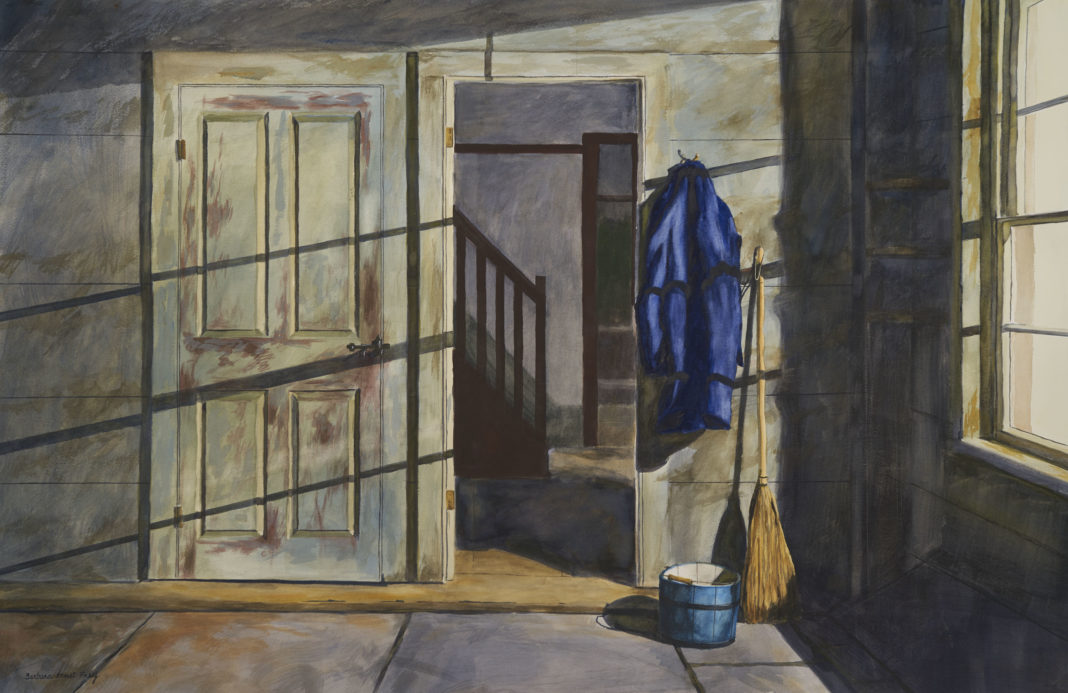
Prey deliberately chose watercolor as her medium for all 10 paintings in the exhibition, explaining that watercolor lends a transparency that, in the context of this series, is akin to a kind of spiritual transparency. “When I’m looking at architecture, essentially, I’m looking at light itself. In this way, all light is borrowed light,” she said.

